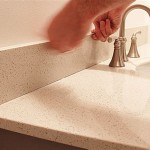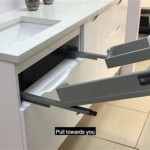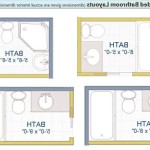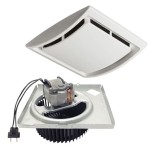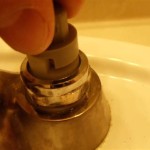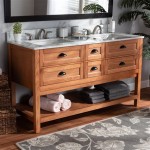Creating a Homemade Plunger for Bathroom Sink Clogs
A clogged bathroom sink can be a frustrating experience, preventing one from performing basic hygiene tasks. While store-bought plungers are readily available, making a homemade plunger can be a cost-effective and environmentally friendly alternative. This article will guide you through the process of creating a simple and effective homemade plunger using easily accessible materials.
Tools and Materials
To create a homemade plunger, you will need the following materials:
- A sturdy plastic bottle (such as a water bottle or soda bottle)
- Scissors or a utility knife
- A rubber band
- Optional: Duct tape
The plastic bottle will serve as the plunger's body, while the rubber band will create a seal around the sink drain. Duct tape can be used to reinforce the bottle's opening and prevent leakage.
Construction Process
Follow these steps to create your homemade plunger:
- Prepare the bottle: Begin by thoroughly cleaning the plastic bottle. Remove any labels and make sure it is empty and dry.
- Cut the opening: Using scissors or a utility knife, carefully cut off the bottom of the bottle. The remaining portion will form the plunger's head.
- Create a seal: Securely wrap a rubber band around the top of the bottle's opening, creating a tight seal. The rubber band will create the suction needed to dislodge the clog.
- Reinforce the seal: (Optional) If desired, use duct tape to further reinforce the rubber band and the bottle's opening, ensuring a leak-proof seal.
Your homemade plunger is now ready to be used.
Using the Homemade Plunger
To use your homemade plunger, follow these steps:
- Fill the sink: Fill the bathroom sink with enough water to cover the drain opening.
- Position the plunger: Center the plunger's head directly over the drain opening, ensuring a tight seal.
- Apply pressure: Gently push down on the plunger's head, creating suction.
- Plunge up and down: Quickly and forcefully move the plunger up and down, creating pressure waves that will hopefully dislodge the clog.
- Repeat as needed: Continue plunging until the clog is dislodged or the water begins to drain freely.
If the clog persists, you may need to try other methods, such as using a drain cleaner or a plumbing snake. However, a homemade plunger can often be a simple and effective solution for clearing minor blockages in a bathroom sink.
Advantages of a Homemade Plunger
There are several advantages to using a homemade plunger:
- Cost-effective: It is significantly cheaper than purchasing a store-bought plunger.
- Versatile: It can be used for various plumbing issues, including clogged sinks, toilets, and bathtubs.
- Environmentally friendly: It eliminates the need for disposable plastic plungers, reducing waste.
- Easy to make: With readily available materials and a few simple steps, anyone can create their own homemade plunger.
By following these instructions, you can easily create a homemade plunger and tackle those annoying bathroom sink clogs.

How To Unblock A Sink 10 Effective Methods My Plumber

How To Unclog A Bathroom Sink Hana S Happy Home

Unclog Sink Drain How To With Plunger

How To Unclog A Bathroom Sink

How To Unclog Your Bathroom Sink 5 Diy Solutions

How To Use A Plunger Easy Ways Unclog Toilets Drains

How To Unclog A Bathroom Sink Hana S Happy Home

Plunger To Unclog Bathroom Sink Tiktok Search

I Blinged Out A Toilet Plunger Will Take Orders Ha Paper Holder

5 Chemical Free Ways To Clear A Clogged Drain Cottage Life
Related Posts

